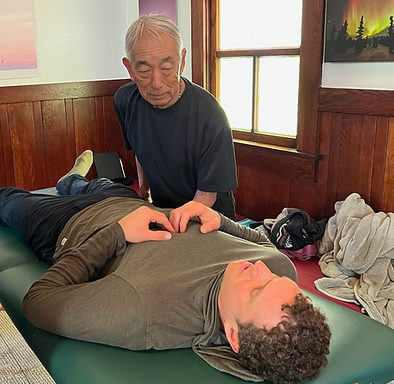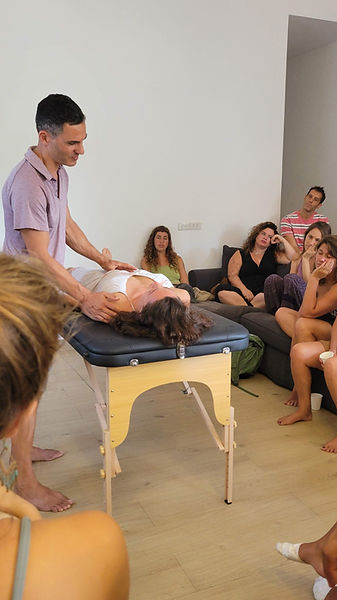

Tamura Method creator, Wynn Tamura
Somatic therapy is becoming more widely embraced, especially as trauma research increasingly supports body-based approaches.
At its core, somatic psychotherapy recognizes that subtle body cues—like posture, breath, tone of voice, and movement—are gateways to unconscious emotional material.
True transformation happens not only through insight but through direct, embodied experience.
The Tamura Method builds on the foundations of somatic psychotherapy by introducing one of the most powerful tools for deep healing: attuned, energetic touch.
About theTamura Method
While many somatic approaches emphasize mindfulness and body awareness, the Tamura Method goes further—offering a way to access emotional patterns at their source, deep within the body and psyche. Touch becomes a direct bridge to early imprints, attachment wounds, and the hidden layers of the self.
By touching directly into the wounded child—the fulcrum of emotional suffering—this method initiates healing at the core, creating profound shifts that reverberate across all levels of a person's life.
Originally developed by Wynn Tamura through over 45 years of practice in Oakland, California, the method blends somatic psychotherapy with subtle energy work and touch-based healing. It is now carried forward by a group of experienced trainers dedicated to preserving and evolving this unique approach.

A Path to Healing the Wounded Self
At the heart of the Tamura Method is the understanding that within each of us lives both an authentic Adult Self and a wounded Child Self. Emotional suffering often arises when the Child Self becomes activated and temporarily takes over, leading us to react from pain, fear, or distorted beliefs about ourselves and others.
The Tamura Method facilitates direct contact with this wounded Child Self—not just through memory or talk therapy, but through real-time, embodied connection. By combining energetic touch with mindful presence, the practitioner creates a safe, attuned relationship in which the child part can feel seen, met, and healed.
Touch in this method is not generic—it is deeply intuitive and attuned to each person’s specific needs. Practitioners use their presence and energetic awareness to connect with the client’s body memory, emotional states, and core wounds. This creates a felt sense of being met and loved in the places that needed it most.
As this connection strengthens, the client’s Adult Self naturally becomes more embodied, loving, and central. A new internal relationship forms—one in which the adult can care for and integrate the child self. This shift often results in greater self-compassion, authenticity, and emotional resilience.

Somatic Healing Beyond Talk Therapy

While rooted in somatic psychotherapy, the Tamura Method has been adapted by a wide range of healing professionals—including massage therapists, acupuncturists, physical therapists, and psychedelic guides. Sessions often begin with dialogue and then transition to the massage table, where the client remains fully clothed and engaged in ongoing verbal and energetic communication. Touch is gentle, subtle, and always collaborative.
The Tamura Method stands out for its emphasis on tracking both muscular and energetic patterns in the body. Practitioners learn to sense where energy is blocked, where emotional pain is stored, and how to use presence and touch to support release and integration. At its core, the method is relational: healing happens in connection—with the self, the practitioner, and the body.
This embodied, intuitive, and deeply relational way of working brings clients into contact with their deepest truths—and gives practitioners the tools to guide that process with care, love, and skill.